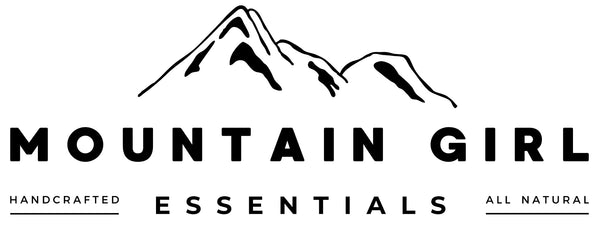Ingredients
What I use and what I don’t

I believe that plant nutrients are rocket fuel to healthy vibrant skin. In the way that whole foods feed your body, natural ingredients help nourish and improve your skin health. I rely on the power of cold-pressed plant oils, wildcrafted infusions, natural plant extracts, and Artisan Distilled Essential Oils and Hydrosols, in my micro-batch skincare products. Read about my ingredient sourcing strategy here.
But what good are the best quality ingredients if we don’t avoid the bad stuff? Because both good and bad are absorbed through our skin we avoid ingredients that can harm our health. I believe in evolving science that shows prolonged exposure to even small quantities of harmful chemicals in our everyday products has a cumulative, negative effect on our health.
So, here are the ingredients I don't use and why.
Sodium Laurel Sulfate
The main reason I don't use this product is that it is irritating to the skin. Sodium laurel sulfate (SLS) is used as a foaming or lathering agent and is found in things like shampoo, laundry detergent, dishwasher detergent, body wash, hand cleaner, shaving cream, and bubble bath. Why? Because it cleans really well and it’s cheap. However, many people find it too harsh - you know, that tight, dry, itchy feeling you get from commercial soap? SLS is the culprit – it strips the skin of natural oils, breaking the barrier and leaving it exposed. SLS is also an environmental pollutant; it’s toxic to fish and other aquatic animals.
Parabens
Parabens are a class of chemicals, including methylparaben, butylparaben, and propylparaben, that are used as preservatives in personal care products. They are very effective in preventing microbial growth in products, which is important, but they’re endocrine disruptors - interfering with natural hormone levels in humans and animals. Parabens are so pervasive the CDC has measured these chemicals in 99% of people tested! And women had significantly higher levels than men. They point to women’s use of personal care products as the reason why we are more exposed than men. Product preservation is important but there are less toxic ways to do it! [See 2, 3, 4, 5, 6, 10]
Phthalates
Phthalates are pretty high on my no-no list. This group of chemicals is in tons of products. Everything from perfumes, makeup, nail polish, household cleaners, scented candles, air fresheners, yuk! Phthalates are used in certain plastics to make them flexible, and in fragrance to make it last longer. Even if you make a conscious effort to avoid them, you probably have detectable levels in your urine. This is concerning because phthalates mimic estrogen in the body, disrupting our normal hormone cycles. They are being increasingly linked to obesity, breast cancer, thyroid dysfunction, and reproductive anomalies. [See 1, 2, 3, 6, 9]
Petrochemicals
Byproducts of the petroleum industry, like petroleum jelly and mineral oil, are used in personal care products to protect the skin and prevent water loss. I avoid petroleum-based ingredients, mainly, because I like to do my share to decrease dependence on that industry. It’s not sustainable or eco-friendly. Petroleum-based ingredients also have comedogenic (pore-blocking) properties. Because both mineral oil and petroleum jelly block pores, I don't think they are the healthiest choice for our skin. I prefer to allow my skin to breathe. Petroleum doesn’t offer any nutrients for our skin. I choose to use natural, nourishing ingredients derived from plants rather than a byproduct of crude oil that lends no nutritional value for our skin.
Dye
FD&C colors are dyes that have been approved for food, drug, and cosmetic use by the US Food and Drug Administration (FDA). Sadly, questions are starting to surface about their toxicity and most of them are petroleum derived. I prefer to skip the added color with the exception of my soaps, where I use natural botanical powders, minerals and clays that provide skin benefit and produce beautiful muted earth tones. [See 7]
Palm Oil
Palm oil production in Borneo is responsible for the mass devastation of orangutan habitats. Farmers are clearing land fast to cash in on growing demand for palm oil, which is used in half of all supermarket products, from chocolate to shampoo. The failure to protect the rainforests known as Asia’s Amazon -- a vital set of lungs for the planet -- could result in one of the world’s most devastating environmental casualties in the quest for profit and human consumption - something we won't contribute to. [See 11]
Does this list of ingredients to avoid make good sense? Would you like to make the change to clean, green beauty but wonder about the efficacy of natural products because they look and feel different than major beauty brands? I’ll show you how you can open your mind to clean products and break through some of the barriers that hold you back from embracing them. If you are ready to challenge the status quo, then read this.
To your good health,

- https://www.ncbi.nlm.nih.gov/pubmed/27455052 Early Phthalates Exposure in Pregnant Women Is Associated with Alteration of Thyroid Hormones.
- https://www.ncbi.nlm.nih.gov/pubmed/27432241 Cytochrome P450-inhibitory activity of parabens and phthalates used in consumer products
- https://www.ncbi.nlm.nih.gov/pubmed/27424048 Endocrine disrupting chemicals and endometriosis
- http://www.ncbi.nlm.nih.gov/pubmed/27189314 Association between paraben exposure and menstrual cycle in female university students in Japan
- https://www.ncbi.nlm.nih.gov/pubmed/27156397 Association of birth outcomes with fetal exposure to parabens, triclosan and triclocarban in an immigrant population in Brooklyn, New York
- https://www.ncbi.nlm.nih.gov/pubmed/26680775 Association of environmental chemicals & estrogen metabolites in children
- https://ehp.niehs.nih.gov/doi/full/10.1289/ehp.118-a428 Diet and Nutrition: The Artificial Food Dye Blues
- https://www.cdc.gov/biomonitoring/Phthalates_FactSheet.html
- https://ehp.niehs.nih.gov/doi/10.1289/ehp.1306681 Temporal Trends in Phthalate Exposures: Findings from the National Health and Nutrition Examination Survey, 2001–2010
- https://www.ncbi.nlm.nih.gov/pubmed/20056562 Urinary concentrations of four parabens in the U.S. population: NHANES 2005-2006
- https://www.cnn.com/interactive/2019/11/asia/borneo-climate-bomb-intl-hnk/ CNN Special Report "Borneo is Burning - How the World's Demand for Palm Oil is Driving Deforestation in Indonesia"
